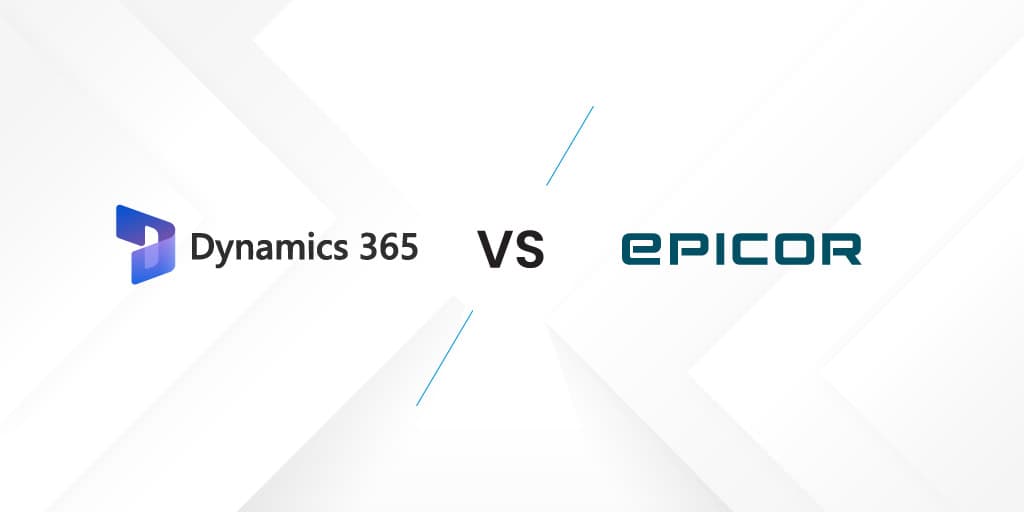
Microsoft Dynamics 365 Implementation Guide: Complete Roadmap for 2025
Your legacy system holds years of customer records and custom fields nobody remembers creating. Your new Dynamics 365 environment promises c...

Have you ever invested in digital transformation, such as implementing lean principles, IoT sensors, or even an out-of-the-box ERP, only to find that your operations are more fragmented than before? It is a paradox: the more tools you deploy, the greater your data disconnect. This happens in boardrooms across industries: executives witness their digital investments creating information silos instead of operational synergy. The problem is not the technology; it is the absence of a single platform that ties everything together.
This guide provides a clear and comprehensive comparison of Dynamics 365 vs Epicor Kinetic, allowing you to determine whether Microsoft Dynamics Finance & Operations or Epicor Kinetic will truly unify your enterprise or simply add more complexity.
Built for Scale, Integrated by Design
If your organization is eyeing multi-country expansion, complex supply chains, or enterprise-wide visibility, Dynamics 365 F&O brings a clear advantage. As a cloud-native ERP designed for global agility, it offers the scalability mid-to-large enterprises need without the constraints of rigid infrastructure.
Where Dynamics 365 truly excels is in its deep integration with the Microsoft ecosystem. It works natively with Office 365, Power BI, Microsoft Teams, and Azure. It brings your data, communication, and analytics into a tightly woven loop. Teams get context, visual insights, and real-time collaboration without ever leaving familiar tools.
For organizations that manage sprawling operations, this system offers a wide functional footprint—from core financials and supply chain to discrete manufacturing. While certain advanced needs—like PLM or complex MRP—may require ecosystem add-ons, Microsoft’s partner landscape is vast and well-resourced, making integrations smoother and more future-ready.
Beyond features, Microsoft’s global partner and support network ensures 24/7 reliability, predictable updates, and a platform that is constantly evolving with AI, IoT, and data-first strategies in mind.
Manufacturing Muscle with Industry Depth
Epicor Kinetic, on the other hand, has long held its ground as a manufacturing-first ERP, and for good reason. Purpose-built for sectors like aerospace, automotive, fabricated metals, and industrial machinery, it dives deep where others skim: complex BOMs, MRP intricacies, dimensional inventory, and production scheduling.
Its pre-built industry templates reduce deployment risk and accelerate time-to-value, especially for organizations with mature processes and high customization needs. That said, what makes Epicor Kinetic stand out is the way it modernizes legacy strengths. Its latest iterations offer a refreshed, cloud-ready architecture with support for enterprise search, business intelligence, and IoT capabilities, helping manufacturers future-proof operations without uprooting everything.
For mid-sized businesses ($50M–$750M) seeking control, configurability, and sector alignment, Kinetic delivers operational precision, albeit sometimes with heavier customization and consulting dependencies.
| Criterion | Dynamics 365 F&O | Epicor Kinetic |
| Global scalability | Hybrid and cloud-native for enterprise-wide rollout | Cloud-ready, but primarily single-site focused |
| Microsoft ecosystem integration | Native tie-ins with Teams, Office 365, and Power BI | Integrates, but not native within Microsoft tools |
| Manufacturing precision | Broad manufacturing + add-ons required | BOM, MRP, scheduling suited for discrete industries |
| Implementation speed | Modular deployment, moderate ramp-up time | Deploys faster via vertical templates |
| Analytics and AI | Embedded Power BI and Azure ML | BI-ready, but lacks the depth of the Microsoft AI stack |
| Mid-market suitability | Scales across mid-to-large enterprises | Built for $50M to $750M manufacturers |
| Support and Partner network | Extensive global Microsoft partner ecosystem | Strong, though often regional/local support |
Microsoft Dynamics 365 Finance & Operations operates primarily through cloud-based deployment on Microsoft’s managed infrastructure, offering limited on-premises options. The platform provides automatic updates and maintenance handled entirely by Microsoft, with seamless integration to Azure services for extended functionality. This approach ensures consistent performance and security but requires organizations to adapt to Microsoft’s update and maintenance schedules.
Epicor Kinetic offers exceptional deployment flexibility with cloud, on-premises, or hybrid configuration options. Organizations can choose their preferred cloud providers, including AWS, Azure, or Google Cloud, with both self-managed and vendor-managed hosting arrangements available. This flexibility provides greater control over update schedules and customizations, allowing companies to align their ERP infrastructure with existing IT strategies.
Dynamics 365 Finance & Operations
Epicor Kinetic
Microsoft Dynamics 365 Finance & Operations
Epicor Kinetic
Dynamics 365 Finance & Operations
Epicor Kinetic
Microsoft Dynamics 365 Finance & Operations
Epicor Kinetic
Microsoft Dynamics 365 Finance & Operations
Epicor Kinetic
Choosing between Dynamics 365 Finance & Operations and Epicor Kinetic is a decision that could significantly impact your business for years to come, both operationally and financially, as well as culturally.
At LevelShift, we have seen both sides of that decision. The right ERP can drive faster closes, smarter planning, and real operational harmony. The wrong one? It can slow you down and introduce friction where you need flow.
That is why our approach goes far beyond traditional ERP consulting. We combine hands-on experience with both platforms and deep industry insight to offer:
But what sets us apart is that we deliver all this through our On-Demand Services model. There is no commitment to long-term contracts or oversized consulting retainers. You tap into expert support only when you need it and pay only for the hours used.
Reach out for a strategic consultation and make this ERP decision the one that sets your business up for growth.

What if your ERP investment paid for itself within 12 to 24 months? Understandin...

What does a half-decade of innovation cost? For Business Central users, the answ...

ERP implementations fail more often than they succeed—many studies show that ove...

Microsoft Dynamics 365 Implementation Guide: Complete Roadmap for 2025
Your legacy system holds years of customer records and custom fields nobody remembers creating. Your new Dynamics 365 environment promises c...

How Dynamics 365 Adapts to Manufacturing, Retail, and Professional Services
Every industry operates differently: a manufacturing plant focuses on production efficiency, while a retail chain tracks sales and inventory...

Transform Enterprise CX with Copilot in Dynamics 365 Customer Insights
For enterprises with over $100 million in revenue, data is both a goldmine and a growing pain. Teams gather massive amounts of customer data...